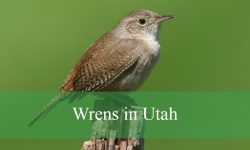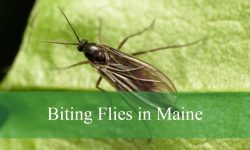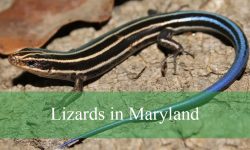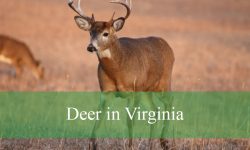Maine has many small birds that live in forests, parks, and backyards all year round. These birds come in many colors and shapes, from bright warblers to common sparrows. Watching these small birds makes spending time outside more fun and interesting.
Knowing how to identify these 38 common small birds in Maine helps you enjoy nature even more. Each bird has different colors, sizes, and songs that make them easy to tell apart. Learning about these birds can make your time outdoors better and more exciting.
This guide shows clear pictures and easy tips to help you recognize these small birds. You can spot them on trails, in parks, or even near your home. Knowing these birds will help you enjoy Maine’s wildlife a lot more.
Common Small Birds Found in Maine
Black-capped Chickadee

The Black-capped Chickadee is a small, energetic songbird easily recognized by its black cap and bib, white cheeks, and soft gray back and wings. Its underparts are a pale buffy-white, and the bird measures around 5 to 6 inches in length with a wingspan of about 8 inches. Its distinctive “chicka-dee-dee-dee” call not only gives the species its name but also helps birders identify it in the wild.
Known for its curious and bold behavior, the chickadee is often the first bird to visit backyard feeders, especially during the colder months. It favors black oil sunflower seeds, peanuts, suet, and even hand feeding in some instances. This species often forms mixed-species foraging flocks in winter, joining with nuthatches, titmice, and kinglets to increase foraging efficiency and predator detection.
In Maine, the Black-capped Chickadee is a year-round resident found in a variety of habitats including deciduous and mixed forests, suburban woodlots, and backyards. It is the official state bird of Maine and thrives in the state’s cooler climate, especially during snowy winters when it relies heavily on feeders and caches food in bark crevices.
American Goldfinch
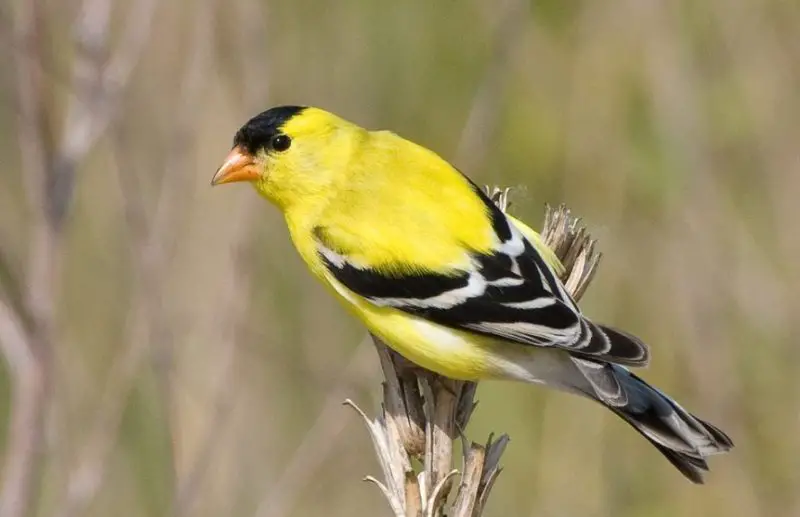
The American Goldfinch is a vibrant yellow songbird during breeding season, with striking black wings, a black forehead, and white markings on the wings and tail. In contrast, its non-breeding plumage is a duller olive-brown, making seasonal identification more challenging. It’s a small bird, measuring about 4.5 to 5 inches in length, and has a distinct bouncy flight pattern.
Goldfinches are strict vegetarians, feeding primarily on seeds from thistles, sunflowers, dandelions, and asters. They are frequent visitors at backyard feeders stocked with nyjer (thistle) and sunflower seeds. Their late summer breeding season, unusual among North American songbirds, coincides with the peak availability of seed-rich plants.
In Maine, the American Goldfinch is a common sight in open fields, meadows, weedy areas, and suburban gardens. They are present year-round, although many migrate short distances to southern parts of the state during winter. Their cheerful, canary-like song and social behavior make them a favorite among birdwatchers across the region.
Song Sparrow
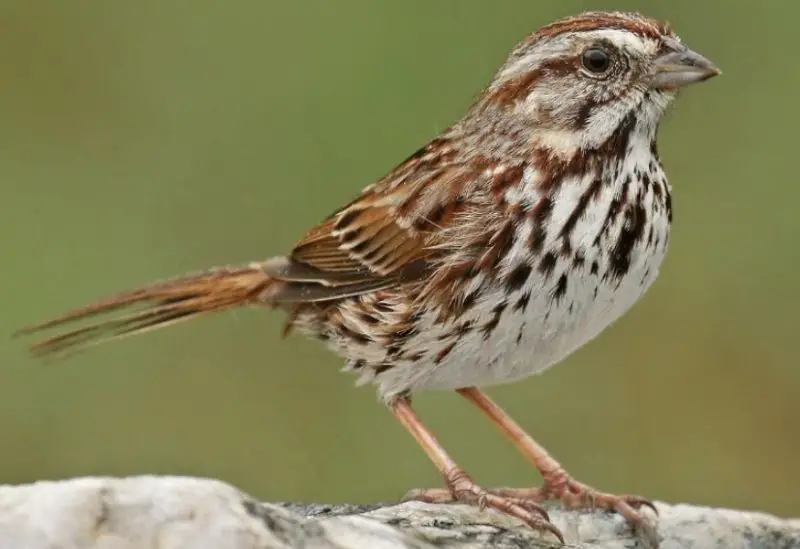
The Song Sparrow is a medium-sized, streaky brown bird with a rounded tail and a distinctive dark spot in the center of its breast. It has a gray face with a brown crown, and heavy brown streaks down its flanks. Measuring about 5.5 to 7 inches long, it varies in appearance across its range, but its rich, melodic song is always a key identifier.
This sparrow is known for its persistent singing, especially during early morning hours in spring and summer. Song Sparrows forage mostly on the ground, eating insects in the breeding season and seeds during the colder months. They are solitary or found in loose groups, often hiding in brushy vegetation or shrubs when disturbed.
In Maine, Song Sparrows are commonly found near wetlands, thickets, marsh edges, gardens, and forest clearings. They breed throughout the state and are present in most seasons, though some migrate south during harsh winters. Their adaptability to both wild and developed areas helps them thrive in a wide range of Maine landscapes.
Northern Cardinal

The Northern Cardinal is one of Maine’s most eye-catching birds, with the male boasting a vivid red body, black face mask, and crest, while the female displays softer tones of brown with warm red highlights. Both sexes are about 8–9 inches long with a thick, orange-red bill ideal for cracking seeds. Their sharp, whistled songs are among the most recognizable bird calls.
Cardinals are non-migratory and maintain territories year-round. They feed on seeds, fruits, and insects, commonly visiting feeders for sunflower seeds, safflower, and peanuts. Mated pairs are often seen foraging together or singing in duet, and males are known for feeding females beak-to-beak during courtship.
In Maine, Northern Cardinals have expanded their range northward in recent decades and are now fairly common in southern and coastal parts of the state. They prefer dense shrubs, woodland edges, and suburban gardens, where cover and food are plentiful. Their vibrant color and sweet song make them a welcome presence in any backyard.
White-breasted Nuthatch

The White-breasted Nuthatch is a compact bird with a short tail, long bill, and a clean white face and underparts. Its back is a bluish-gray, and males have a black crown while females have a more grayish one. Measuring about 5 to 6 inches in length, it often moves in a unique head-down manner along tree trunks and branches.
This species is a frequent visitor to backyard feeders, where it favors sunflower seeds, peanuts, and suet. White-breasted Nuthatches are known for storing food in bark crevices and returning to these caches later. Their nasal “yank-yank” calls help identify them, especially in mixed-species foraging flocks.
In Maine, these birds are found year-round in mature deciduous forests, mixed woodlands, and suburban neighborhoods with large trees. They nest in natural cavities or old woodpecker holes, often lining them with fur or bark. Their agile foraging style and bold behavior make them a favorite among local bird enthusiasts.
Downy Woodpecker
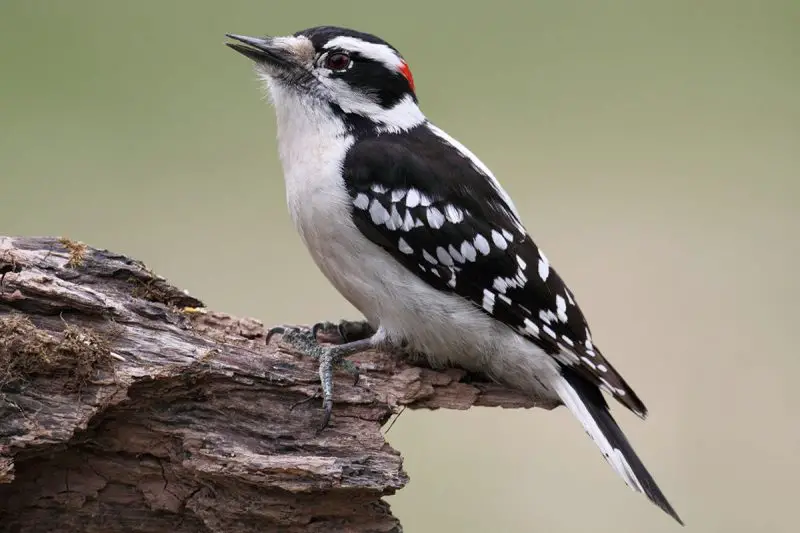
The Downy Woodpecker is the smallest woodpecker in North America, measuring about 5.5 to 6.7 inches long with a wingspan of up to 11 inches. It has a black-and-white checkered back, white underparts, and a bold white stripe down the center of the back. Males have a small red patch on the back of the head, which females lack. Its bill is short and stubby, helping distinguish it from the similar but larger Hairy Woodpecker.
Downy Woodpeckers are curious and acrobatic, often seen clinging to tree trunks and branches in search of insects and larvae. They also eat berries, seeds, and suet, making them regular visitors to backyard feeders. Their drumming on tree trunks and high-pitched “pik” call help signal their presence, especially during breeding season.
This species is a year-round resident throughout Maine, favoring deciduous forests, orchards, parks, and residential areas with mature trees. They nest in tree cavities and are tolerant of human activity, often nesting close to homes or in wooded backyards. Their small size and friendly nature make them a favorite among birdwatchers.
Tufted Titmouse
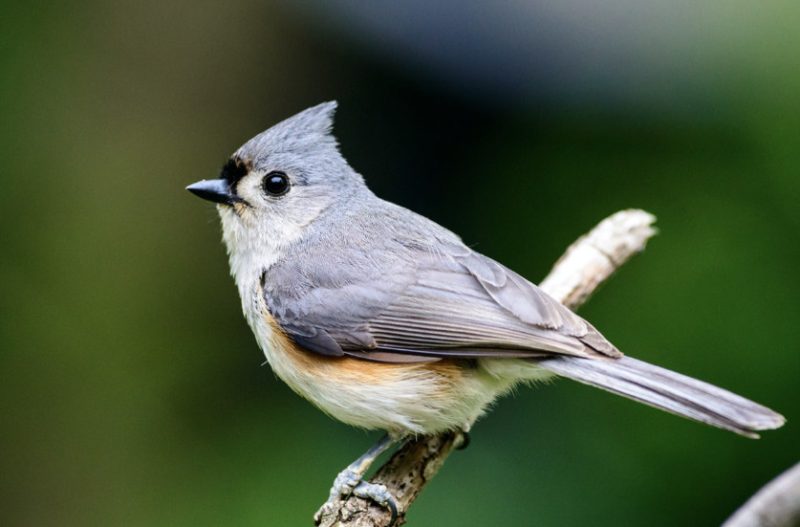
The Tufted Titmouse is a small, round songbird with soft gray upperparts, a white belly, and a peach-colored wash along its flanks. Its most distinctive feature is the pointed crest on top of its head, giving it an alert and expressive appearance. It measures about 5.5 to 6.3 inches in length and has large black eyes and a stout black bill.
Titmice are lively, social birds often seen in small flocks, particularly during the colder months. They are frequent visitors to feeders where they enjoy sunflower seeds, peanuts, and suet. These birds have a wide range of vocalizations, including their clear, whistled “peter-peter-peter” call, which can be heard year-round.
In Maine, the Tufted Titmouse is more common in the southern and coastal regions but has gradually expanded its range northward. It prefers deciduous and mixed forests, wooded suburbs, and areas with plenty of tree cover. They often nest in natural cavities or old woodpecker holes, lining them with soft materials like moss, fur, or feathers.
Hairy Woodpecker
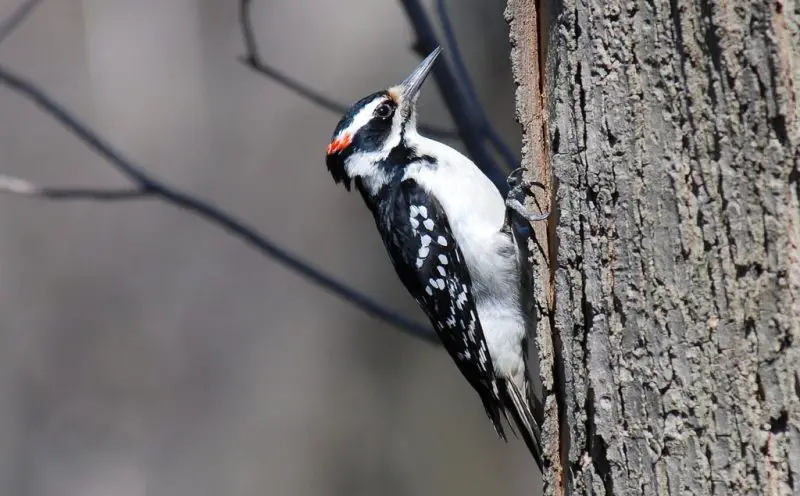
The Hairy Woodpecker is a medium-sized woodpecker with striking black and white plumage, similar in appearance to the Downy Woodpecker but larger and with a noticeably longer, chisel-like bill. It measures around 9 inches in length and has a black back with a white central stripe, white underparts, and black-and-white facial markings. Males also have a red patch on the back of the head.
This species is a powerful driller, using its strong bill to excavate wood in search of beetle larvae, ants, and other insects. It also feeds on seeds and suet and will visit feeders, though it is generally shyer than the Downy Woodpecker. Its sharp “peek” call and rhythmic drumming make it easy to detect, even when it’s out of sight.
Hairy Woodpeckers are found year-round throughout Maine in mature forests, wooded swamps, and parks. They prefer large trees for foraging and nesting and often follow fallen or dead trees where insect prey is abundant. Though less common in residential areas than their smaller cousin, they are regularly spotted in well-wooded yards and forest edges.
Common Yellowthroat

The Common Yellowthroat is a small, energetic warbler recognized by the adult male’s distinctive black face mask and bright yellow throat and chest. Females lack the mask and are more uniformly olive-brown above with a yellow wash on the throat. This bird is typically about 4.3 to 5.1 inches long and has a slender body with a rounded tail.
This warbler is secretive and prefers to stay low in dense vegetation, making quick movements through reeds, brush, or thick undergrowth. Its distinctive “witchety-witchety-witchety” song is often the first clue to its presence. Common Yellowthroats feed on insects and spiders, gleaning them from leaves and stems in moist, tangled habitats.
In Maine, the Common Yellowthroat breeds widely in wetlands, marsh edges, wet meadows, and shrubby fields. They are summer residents, migrating south in fall to Central America and the southern U.S. for winter. Their preference for low, dense cover makes them common yet often hidden sights during birding outings near water.
Gray Catbird
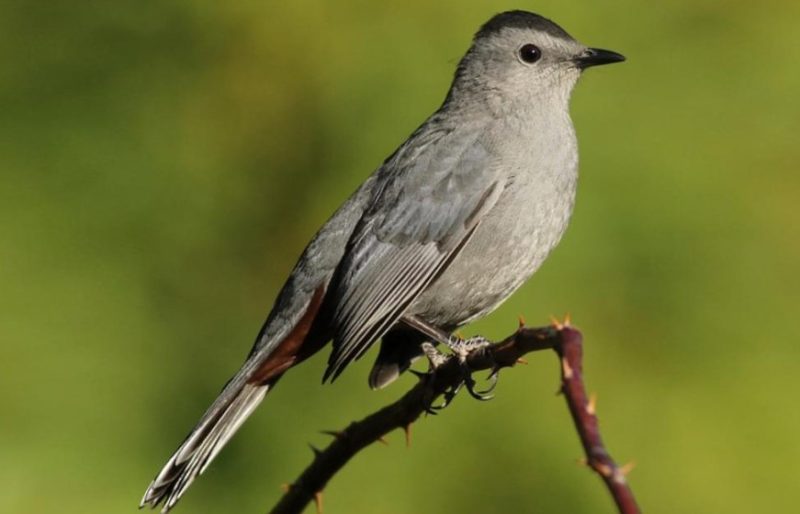
The Gray Catbird is a medium-sized songbird with slate-gray plumage, a black cap, and a rich rusty-red patch under its tail. It measures about 8.5 to 9 inches long with a slender body, long tail, and slightly downcurved black bill. The name “catbird” comes from its cat-like mewing call, which it often repeats while hidden in shrubs.
Catbirds are known for their impressive vocal mimicry and complex songs, which include borrowed phrases from other bird species and environmental sounds. They forage on the ground and in low vegetation, feeding on insects, fruits, and berries. They are bold but secretive, usually staying within dense cover and emerging briefly to feed.
In Maine, Gray Catbirds are summer visitors, common in thickets, woodland edges, gardens, and shrublands. They build nests in dense vegetation, often at low heights. Their curious behavior and rich vocalizations make them a fascinating presence in backyards and natural areas during the breeding season.
Dark-eyed Junco
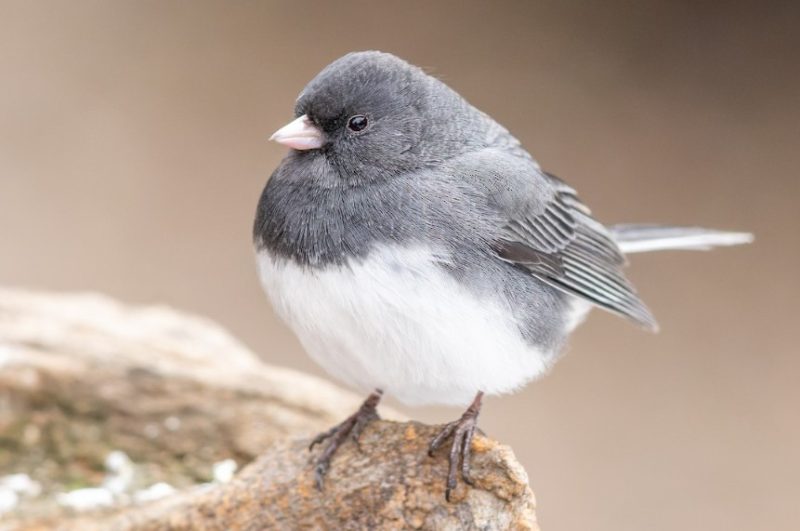
The Dark-eyed Junco is a small sparrow known for its clean, two-toned appearance. In the eastern U.S., including Maine, it typically has a slate-gray head, back, and chest, with a white belly and outer tail feathers that flash during flight. Measuring around 5.5 to 6.3 inches in length, this bird is easily recognized during the colder months when flocks forage on the ground.
Juncos are primarily ground feeders and forage for seeds, insects, and small berries by hopping and scratching in leaf litter or snow. They often visit feeders in winter, especially those with millet, cracked corn, or sunflower seeds. Their gentle, tinkling call and soft trills are common background sounds in Maine’s winter landscapes.
In Maine, the Dark-eyed Junco is a winter resident throughout the state and a summer breeder in northern forests. They favor coniferous and mixed woods during nesting season and transition to open yards, roadsides, and brushy edges during migration and winter. Their return each fall is often seen as a sign of changing seasons.
Eastern Phoebe
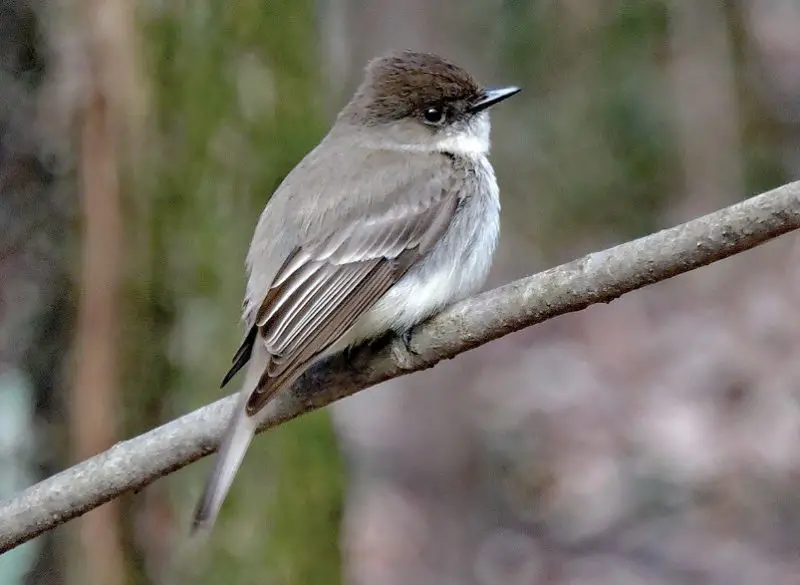
The Eastern Phoebe is a medium-sized flycatcher with a dull gray-brown back, off-white underparts, and a slightly darker head. It lacks strong wing bars or bold markings, giving it a plain yet elegant appearance. This bird measures about 6.5 to 7 inches in length and is easily recognized by its constant tail bobbing behavior.
Phoebes are insectivores and are often seen perching on low branches, wires, or fence posts, darting out to catch flying insects mid-air. They occasionally eat berries during cooler months. Their sharp “fee-bee” call is a familiar springtime sound in Maine, often heard near homes, barns, or streams.
In Maine, the Eastern Phoebe is a widespread summer breeder, favoring open woodlands, farmyards, and riparian habitats. They often nest on ledges, under bridges, or tucked into building eaves. Their early arrival in spring and adaptability to human structures make them one of the first flycatchers to return each year.
Chipping Sparrow
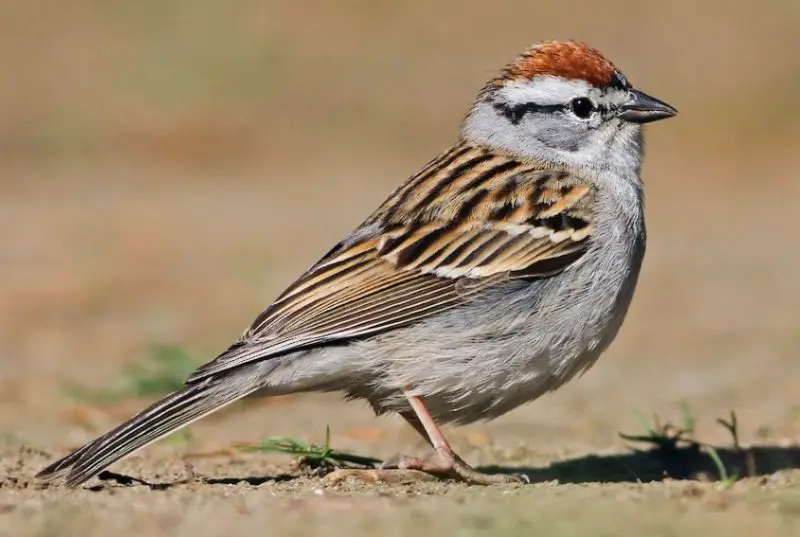
The Chipping Sparrow is a slender, small songbird with a crisp appearance: a rusty-red cap, clean gray face, and black eye line that stands out against pale underparts. It measures about 5 to 5.5 inches long and has a short, notched tail and fine, pointed bill suited for eating small seeds.
This sparrow is active and social, often seen hopping on lawns, singing from treetops, or scratching through leaf litter. Its song is a long, dry trill that sounds like a sewing machine. During the breeding season, it primarily eats insects but switches to seeds in the fall and winter months, often visiting feeders.
In Maine, Chipping Sparrows are common summer residents, found in open woodlands, parks, yards, and forest edges. They build small, cup-shaped nests in shrubs or conifers and are one of the more familiar backyard sparrows during the warmer months. Many migrate south for winter but return reliably in spring.
White-throated Sparrow
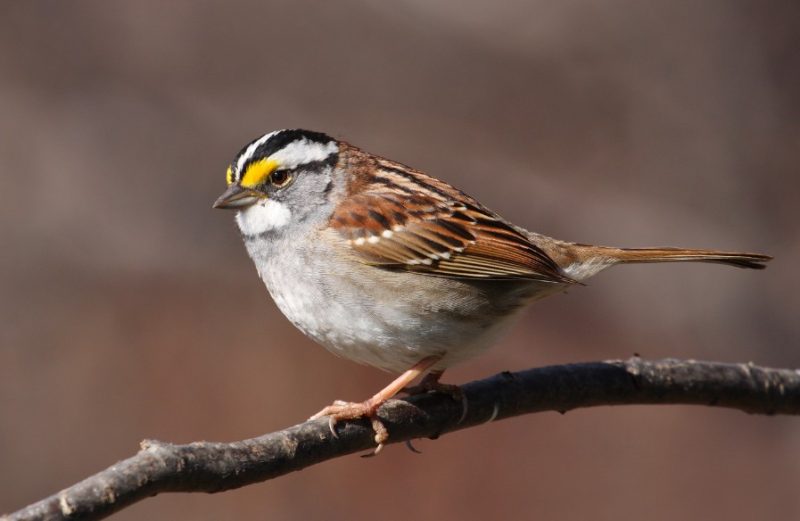
The White-throated Sparrow is a large, handsome sparrow known for its bold white throat, yellow lores (spots between the bill and eyes), and striking black-and-white or tan-striped head. Measuring about 6.3 to 7.1 inches long, it has a gray breast and brown streaked back, with a sweet and whistled song that sounds like “Oh-sweet-Canada-Canada.”
These sparrows forage mainly on the ground, scratching through leaf litter for seeds, berries, and insects. They are frequently seen in loose flocks during migration and winter and will readily visit feeders for millet and sunflower seeds. Males often sing persistently during the breeding season, even from low perches.
In Maine, White-throated Sparrows are widespread summer breeders in northern and central regions and common migrants and winter visitors farther south. They prefer dense undergrowth in forests, wooded edges, and brushy habitats. Their beautiful, haunting song is one of the most recognizable bird calls of Maine’s spring and summer woodlands.
Red-eyed Vireo
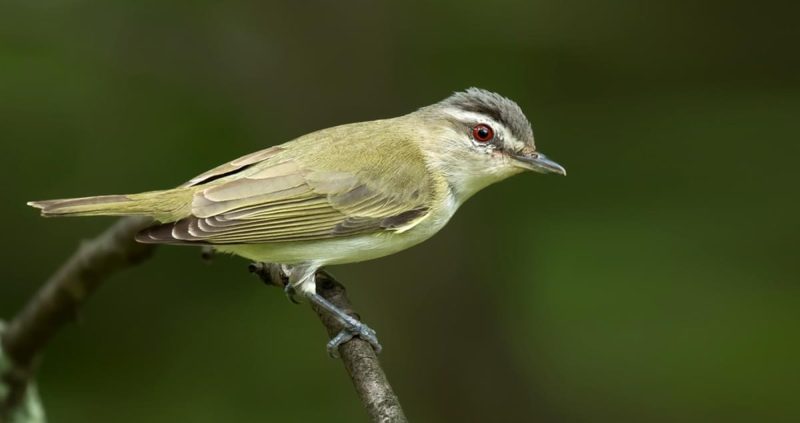
The Red-eyed Vireo is a slender, olive-green songbird with a pale underside, white eyebrow stripe, and a faintly hooked bill. Adults have deep red irises, though this feature is hard to see at a distance. It measures about 5.9 to 6.3 inches long and has a slightly rounded head with a calm but persistent expression.
This bird is a tireless singer, often repeating short, sweet phrases from the treetops throughout the day during breeding season. It feeds on insects and caterpillars during the summer, skillfully gleaning them from leaves, and supplements its diet with berries in late summer and fall. Despite being hard to spot, its nonstop song gives away its presence.
In Maine, the Red-eyed Vireo is a common summer resident in deciduous and mixed forests, especially those with tall, mature trees. It nests high in the canopy, weaving a small hanging nest in the fork of tree branches. Its long breeding season and constant vocalizations make it one of the most vocal woodland birds in the region.
European Starling

The European Starling is a medium-sized bird with glossy black plumage that shimmers with purples and greens in sunlight. During winter, its feathers are heavily speckled with white, and it has a short tail and pointed yellow bill (which turns darker in winter). Measuring around 8.5 inches long, it has a stocky build and direct, strong flight.
Starlings are highly social and often form large, noisy flocks. They are known for their ability to mimic other birds and sounds, adding complexity to their vocalizations. Their diet is varied and includes insects, fruits, grains, and food scraps. In urban areas, they frequently forage on lawns, fields, and streets.
In Maine, European Starlings are year-round residents and thrive in cities, towns, farmlands, and open woodlands. They nest in cavities, including buildings, birdhouses, and tree holes, often displacing native species. Though considered invasive, they are now a well-established and familiar part of Maine’s birdlife.
Yellow-rumped Warbler
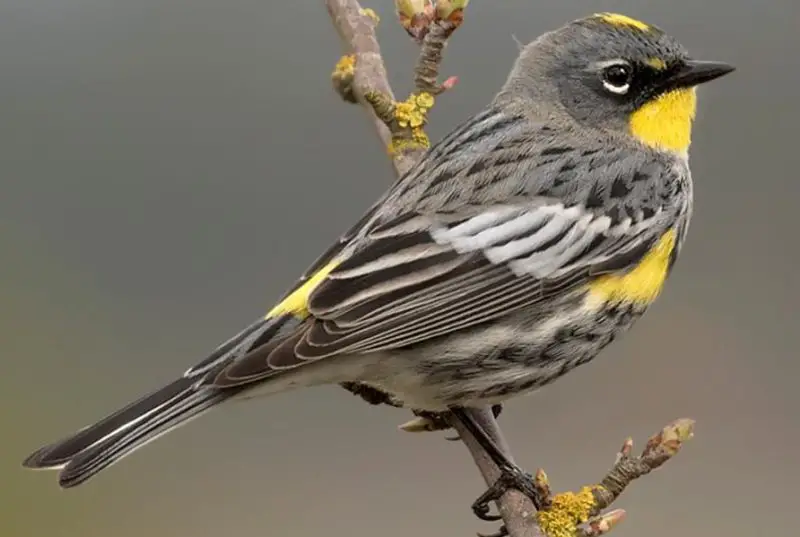
The Yellow-rumped Warbler is a small, active songbird known for its distinctive yellow patches on the rump, sides, and sometimes crown. Its breeding plumage includes a gray back, black mask, and white wing bars, while nonbreeding birds appear duller with more brown tones. It measures about 5.5 inches in length.
This warbler is unique for its ability to digest waxy berries like those of bayberry and juniper, allowing it to winter farther north than most warblers. It feeds mainly on insects during the breeding season but switches to berries and fruits in fall and winter. It’s often seen flitting through trees or sallying out to catch flying insects.
In Maine, Yellow-rumped Warblers are common migrants and summer breeders in coniferous and mixed forests. During spring and fall migration, they appear in a wide range of habitats including gardens and parks. Some remain in southern Maine throughout mild winters, thanks to their flexible diet.
Cedar Waxwing

The Cedar Waxwing is a sleek, medium-sized bird with silky, pale brown plumage, fading to soft gray on the wings and yellow on the belly. It has a prominent crest, a black mask edged in white, and red wax-like tips on some wing feathers. Its tail is tipped with a bright yellow band, and the bird measures around 6 to 7 inches long.
Cedar Waxwings are extremely social and often seen in flocks, especially when feeding on berries. They have a gentle, high-pitched trill and are known for their graceful flight and cooperative behavior—sometimes passing berries to each other before eating. Their diet consists mainly of fruits, especially in fall and winter, but they also eat insects in summer.
In Maine, Cedar Waxwings are year-round residents in some areas, though most are more common in the state during the breeding season and fall migration. They inhabit woodland edges, orchards, parks, and riverbanks, especially places with fruiting trees. Their soft calls and elegant appearance make them a favorite among birders.
Northern Parula

The Northern Parula is a tiny, colorful warbler measuring about 4.3 to 4.7 inches long. It has bluish-gray upperparts, a bright yellow throat and chest, and a greenish patch on the back. A white eye ring and wing bars add contrast, and adult males display a chestnut band across the yellow chest during breeding season.
This warbler is often found foraging high in the canopy, searching for insects and spiders among hanging mosses and leaves. Its song is a buzzy, rising trill that ends abruptly—often described as a “zeee-up.” Though small, it is energetic and active, flitting through branches almost constantly.
In Maine, Northern Parulas are summer breeders mainly in mature forests, particularly where old trees support hanging lichens like “old man’s beard.” They nest in these mosses, creating hidden cup-shaped nests. Their presence is most easily detected by their song, which carries well through the treetops.
House Finch
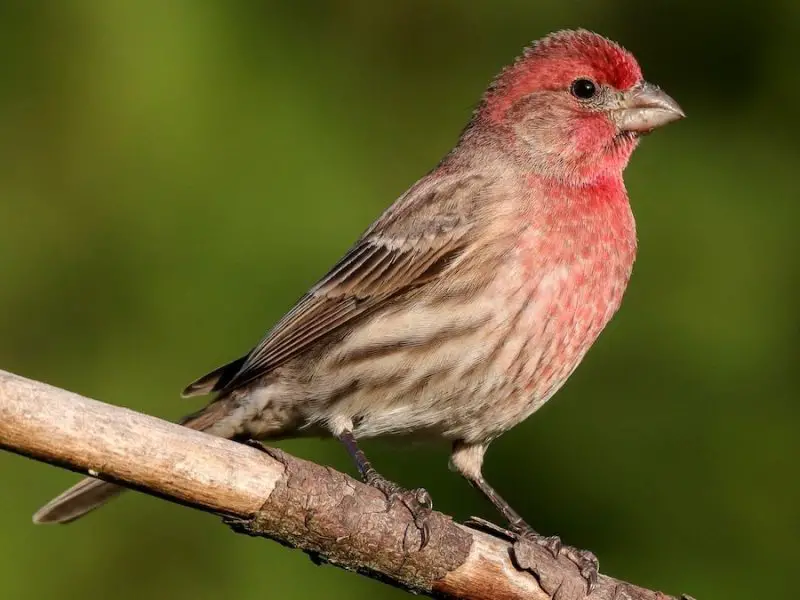
The House Finch is a small, stocky finch with a short, conical beak and a slightly notched tail. Males have rosy red coloring on the head, throat, and chest, contrasting with brown streaked backs and sides. Females lack the red and are plain brown with streaked underparts. They measure about 5 to 6 inches in length.
House Finches are common at feeders and eat a variety of seeds, grains, and fruits. They are social birds, often seen in small flocks, and have a cheerful, warbling song made up of many musical notes. During the breeding season, males sing frequently to attract mates and defend territory.
In Maine, House Finches are year-round residents in urban and suburban areas, where they nest on buildings, hanging planters, or in tree cavities. Originally native to the western U.S., they were introduced to the East and have since spread widely. Their adaptability and friendly presence make them a staple at backyard feeders across the state.
Tree Swallow
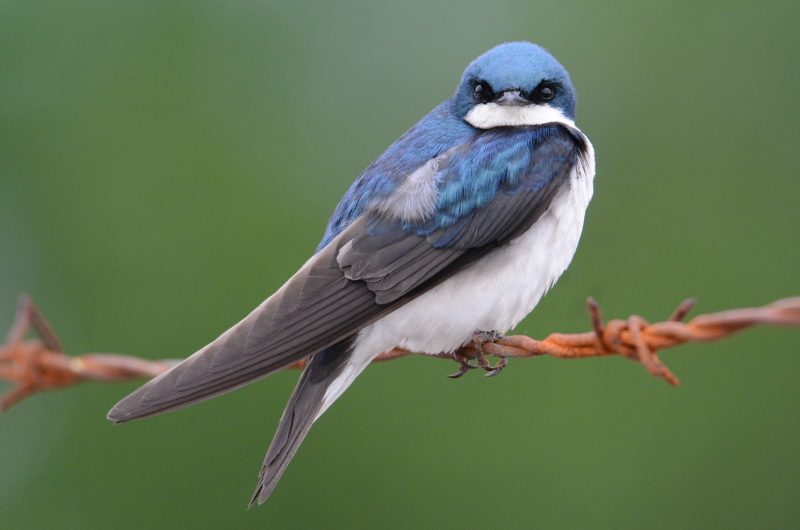
The Tree Swallow is a sleek, agile bird with iridescent blue-green upperparts and bright white underparts. It has long, pointed wings, a short, slightly notched tail, and a small black bill. Measuring about 5 to 6 inches in length, it’s one of the earliest swallows to arrive in Maine each spring.
Tree Swallows feed primarily on flying insects, catching them in mid-air with graceful, acrobatic flight. They are often seen soaring over fields, ponds, and marshes, and may also eat berries—especially bayberries—when insects are scarce. Males and females may be seen perching together near nest sites or singing from fence posts and wires.
In Maine, Tree Swallows are common summer breeders found in open areas near water, such as wetlands, fields, and lakeshores. They readily use nest boxes and natural tree cavities and are often part of nest box trails managed for bluebirds. Their aerial displays and shimmering plumage make them a favorite sight in spring and summer.
Northern Flicker
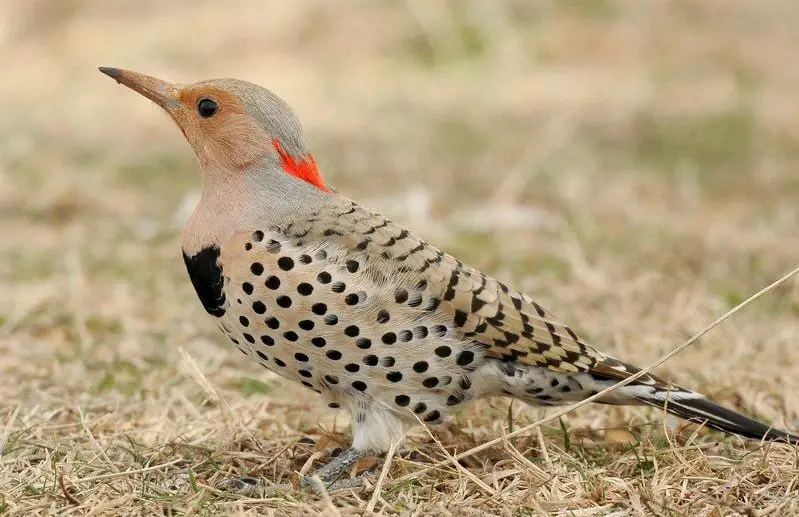
The Northern Flicker is a large, handsome woodpecker with a brown body, black-spotted underparts, and a prominent black crescent on the chest. Eastern birds, including those in Maine, have yellow shafts on their flight feathers and tail. Males have a black mustache mark, while females do not. It measures about 11 to 12 inches long.
Unlike most woodpeckers, Northern Flickers often forage on the ground, digging for ants and beetles with their long, slightly curved bill. They also eat fruits, seeds, and occasionally visit suet feeders. Their loud, repeated “wick-a-wick-a-wick” call and rhythmic drumming are key ways to locate them.
In Maine, Northern Flickers are summer breeders across most of the state, inhabiting open woodlands, forest edges, yards, and parks. They nest in tree cavities, and in fall, they may gather in small groups before migration. Some remain year-round, especially in southern Maine, where they find shelter and food during mild winters.
House Sparrow
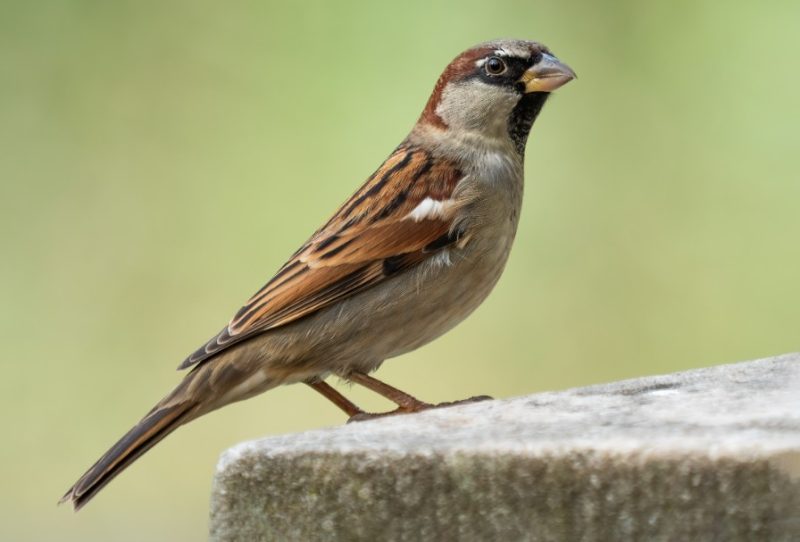
The House Sparrow is a stocky, social bird originally from Europe, now widespread across North America. Males have gray heads, chestnut napes, black bibs, and streaked brown backs, while females and juveniles are plain brown with lighter streaking. They measure about 6 inches long and have a short, thick bill.
These sparrows are highly adaptable and commonly seen around buildings, streets, and farms. They feed on grains, seeds, insects, and food scraps, often foraging in flocks on sidewalks and feeders. House Sparrows are known for their loud, repetitive chirps and aggressive behavior around nesting sites.
In Maine, House Sparrows are year-round residents in urban and suburban areas, often nesting in building crevices, vents, and nest boxes. They can displace native cavity nesters like bluebirds and swallows. Despite their invasive status, they remain a very familiar sight throughout the state.
Yellow Warbler
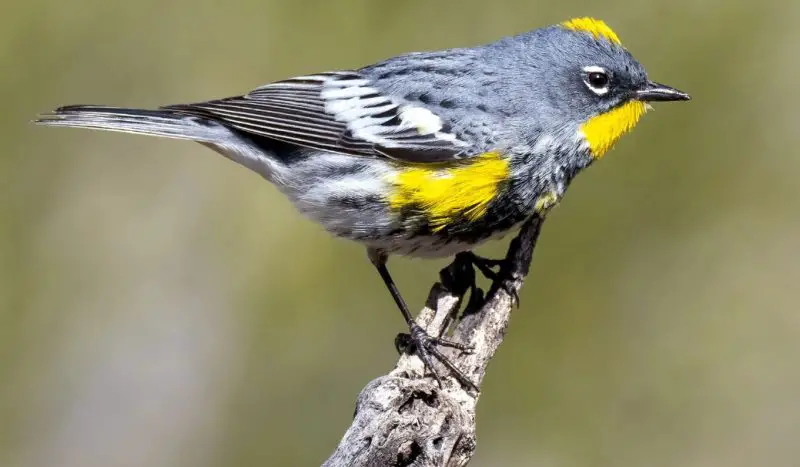
The Yellow Warbler is a bright, golden-yellow songbird with subtle olive back tones and faint reddish streaks on the chest in males. Females are slightly duller but still vibrantly yellow. This small bird measures about 4.7 to 5.1 inches long and has a rounded head and thin, pointed bill.
Yellow Warblers are very active and sing a cheerful, whistled song often described as “sweet-sweet-sweet, I’m-so-sweet.” They feed on insects and spiders, foraging among tree and shrub foliage. Their constant movement and bright color make them easy to spot during breeding season.
In Maine, Yellow Warblers are common summer residents in wet thickets, woodland edges, riversides, and gardens. They nest in shrubs or small trees, often near water. Their return each spring is a welcome sign of the changing season and the richness of local wetland birdlife.
Eastern Bluebird
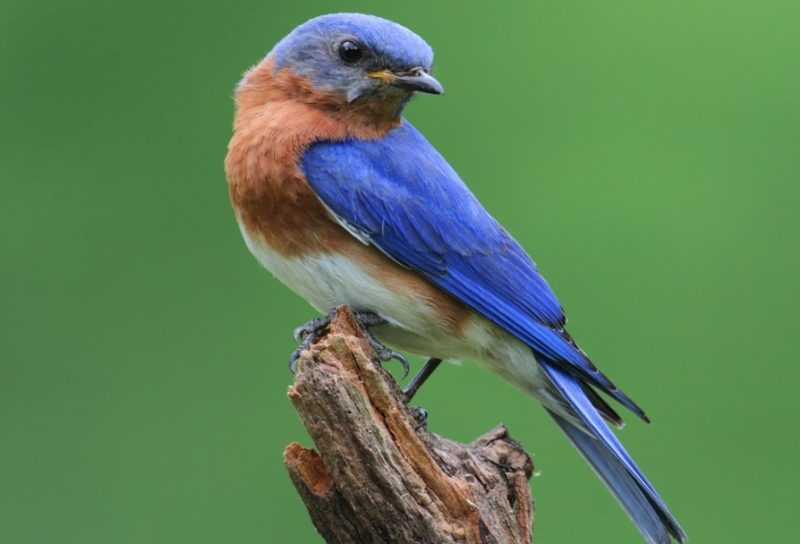
The Eastern Bluebird is a beloved songbird with a vivid blue back and wings, rusty-red chest, and white belly. Females are more muted in color but still show hints of blue and rust. These birds are medium-sized, measuring about 6.5 to 7 inches long, and have a straight bill and upright posture.
Eastern Bluebirds are insectivores in spring and summer, feeding on beetles, caterpillars, and other invertebrates. In cooler months, they shift to eating berries. They are often seen perched on wires or posts, scanning the ground for prey, and they frequently use nest boxes in open grassy areas.
In Maine, Eastern Bluebirds are found in open fields, pastures, and orchards with scattered trees or fences. They are present during the breeding season and into fall, with some overwintering in southern Maine during mild years. Thanks to conservation efforts and nest box programs, their numbers have rebounded across the state.
Ruby-throated Hummingbird
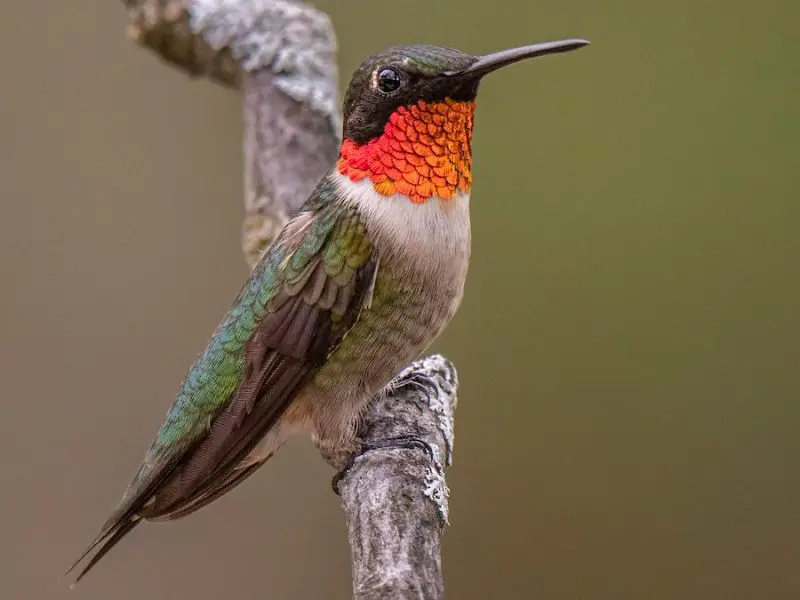
The Ruby-throated Hummingbird is a tiny, fast-moving bird known for its iridescent feathers and hovering flight. Males have a brilliant ruby-red throat patch, emerald-green back, and white underparts, while females lack the red throat and have more subdued coloring. It measures just 3 to 3.5 inches in length with a slender, slightly downcurved bill.
These hummingbirds feed primarily on flower nectar and small insects. They are highly territorial, especially around feeders, and can be seen darting and diving to chase off intruders. Their wings beat up to 50 times per second, producing a soft buzzing sound as they hover or fly rapidly between blooms.
In Maine, Ruby-throated Hummingbirds are the only regularly occurring hummingbird species, arriving in late spring and departing by early fall. They prefer gardens, forest edges, and areas rich in flowering plants. They also visit sugar-water feeders and nest in trees using spider silk and lichen to camouflage their tiny cup-shaped nests.
Ruby-crowned Kinglet
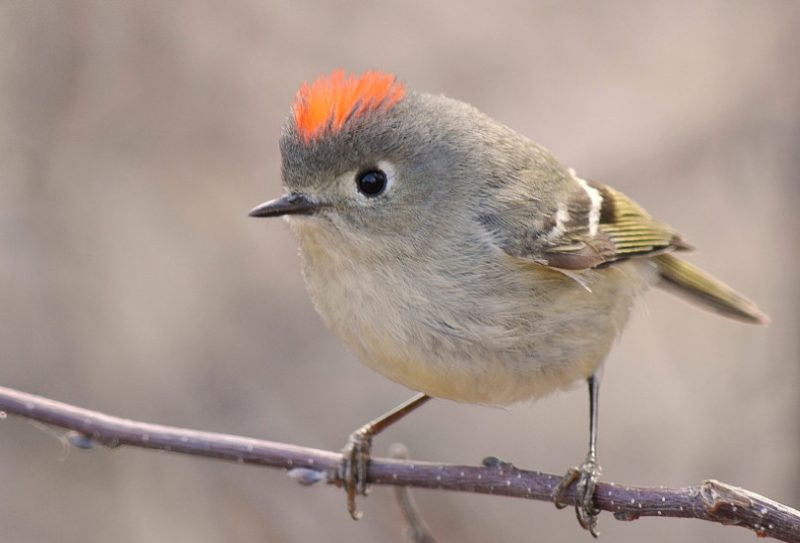
The Ruby-crowned Kinglet is a tiny, energetic songbird with olive-green plumage, a white eye ring, and a hidden ruby-red crown patch visible only when the bird is excited or agitated. It measures about 3.5 to 4.3 inches long and often flicks its wings while foraging.
This species is known for its remarkable voice—a loud, complex song that seems too powerful for such a small bird. Ruby-crowned Kinglets feed on small insects, spiders, and their eggs, flitting through foliage and hovering near leaves to snatch prey. They also eat berries and sap during colder months.
In Maine, these kinglets are common during migration and breed in the state’s northern coniferous forests. They are typically seen in spruce-fir habitats, but during spring and fall, they pass through various woodlands, parks, and gardens. Their nervous movements and vivid song make them relatively easy to detect despite their small size.
Baltimore Oriole

The Baltimore Oriole is a strikingly colorful songbird, with adult males displaying bright orange underparts, a black head, and white wing bars. Females are duller, with more yellow-orange and gray. These birds measure about 7 to 8 inches in length and have long, pointed bills and slender builds.
Baltimore Orioles feed on insects, fruit, and nectar. They are known for their hanging, pouch-like nests made from plant fibers and string, suspended from the tips of tree branches. Their sweet, whistled songs are often heard high in the treetops during spring and early summer.
In Maine, Baltimore Orioles are summer residents, commonly found in open woodlands, parks, orchards, and suburban areas with mature deciduous trees. They arrive in early May and depart by late summer. Orioles are also frequent visitors to feeders offering orange halves or grape jelly.
Great Crested Flycatcher
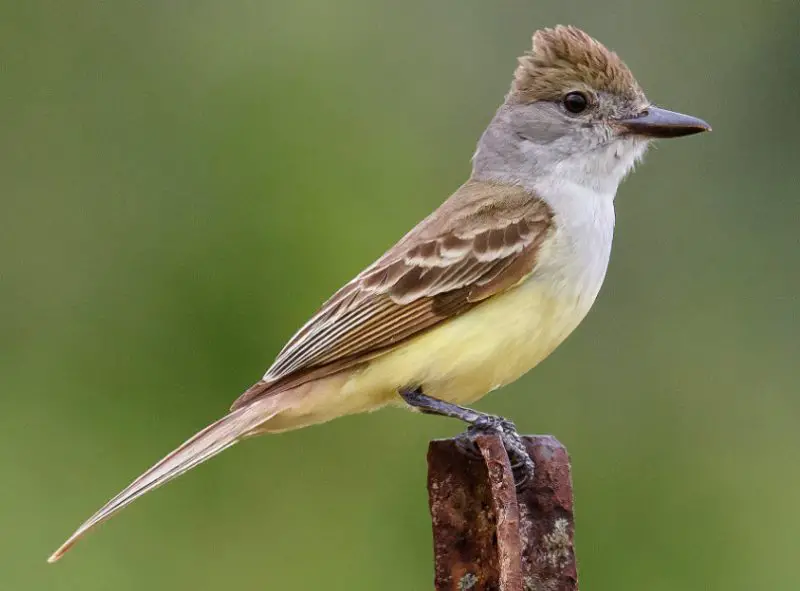
The Great Crested Flycatcher is a large, slender flycatcher with olive-green upperparts, a bright yellow belly, and a gray throat and chest. It also has reddish-brown (rufous) tones in the tail and wing feathers. This bird measures about 7 to 8.5 inches long and has a slightly crested head and strong beak.
This species hunts insects by perching high in trees and flying out to catch prey mid-air. It also consumes fruits and berries. Known for its loud, descending “wheeeep” call, the Great Crested Flycatcher often makes its presence known even when hidden among the canopy.
In Maine, it is a summer breeder found in deciduous forests, wooded edges, and tree-lined suburban areas. It nests in tree cavities and often includes shed snakeskin or cellophane in the nest. Although it stays high in the canopy, it is often heard before it is seen due to its distinct vocalizations.
House Wren
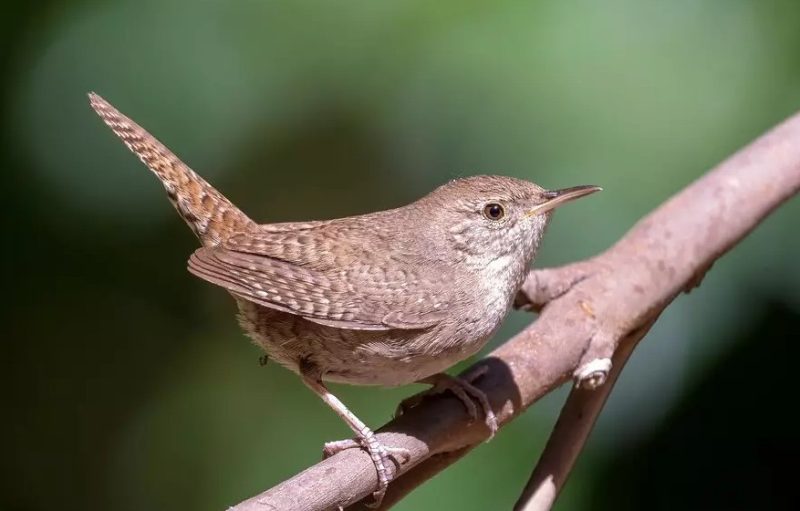
The House Wren is a small, brown songbird with a short tail often held upright, faint barring on the wings and tail, and a plain face. Measuring about 4.3 to 5.1 inches in length, it has a thin, slightly curved bill and an energetic, busy demeanor.
House Wrens are insectivores, feeding on beetles, caterpillars, spiders, and other small invertebrates. They are bold and highly vocal, producing a bubbly, complex song that fills gardens and backyards during spring and summer. Males aggressively defend nesting sites, sometimes evicting other birds from nearby cavities.
In Maine, House Wrens are summer residents in open woodlands, gardens, and suburban areas with nest boxes or natural cavities. They nest in tree holes, fence posts, or even odd man-made structures. Their adaptability and loud, cheerful song make them a well-known backyard bird during the warmer months.
Carolina Wren
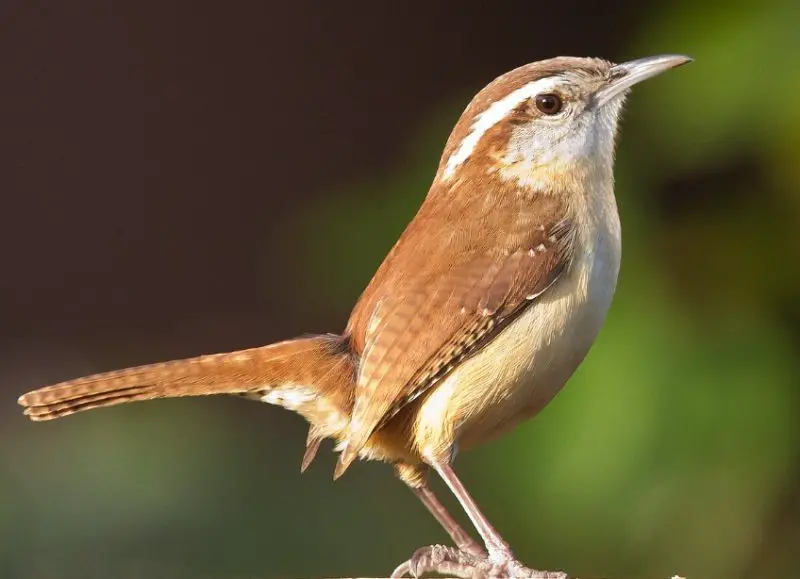
The Carolina Wren is a chunky, energetic bird with warm reddish-brown upperparts, a buffy-orange underside, and a bold white eyebrow stripe. It has a slightly curved bill and a short tail often held upright. This small wren measures about 5.5 inches in length and has a loud, ringing voice that seems much bigger than its body.
These wrens are highly vocal, known for their repeated “tea-kettle, tea-kettle, tea-kettle” song that rings out year-round. They forage in low shrubs, brush piles, and undergrowth, searching for insects, spiders, and other small invertebrates. Carolina Wrens are curious and bold, often exploring sheds, porches, and garages.
In Maine, the Carolina Wren has gradually expanded its range northward and is now a year-round resident in southern and coastal parts of the state. They favor dense vegetation, brushy woods, and suburban gardens with cover. Their survival in winter often depends on access to food and shelter during harsh weather.
Eastern Towhee
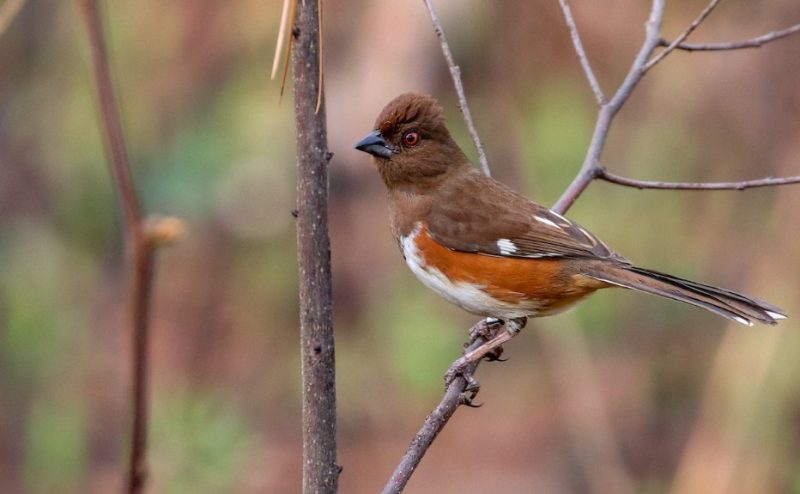
The Eastern Towhee is a striking, medium-sized sparrow with a jet-black head, back, and tail in males, contrasting with white underparts and rusty-red sides. Females have the same pattern but are brown where the males are black. They measure around 7 to 8.5 inches long and have a thick, conical bill and red eyes.
Eastern Towhees are ground feeders that scratch in leaf litter with both feet to uncover insects, seeds, and fallen berries. Their song is a clear and whistled “drink-your-tea,” often followed by high, sharp call notes. They are often shy and stay hidden in thickets, but their voice gives away their presence.
In Maine, Eastern Towhees are summer residents mostly in the southern and central parts of the state. They prefer brushy fields, forest edges, and areas with dense undergrowth. During fall, they migrate south, though a few may linger in sheltered coastal areas.
Indigo Bunting
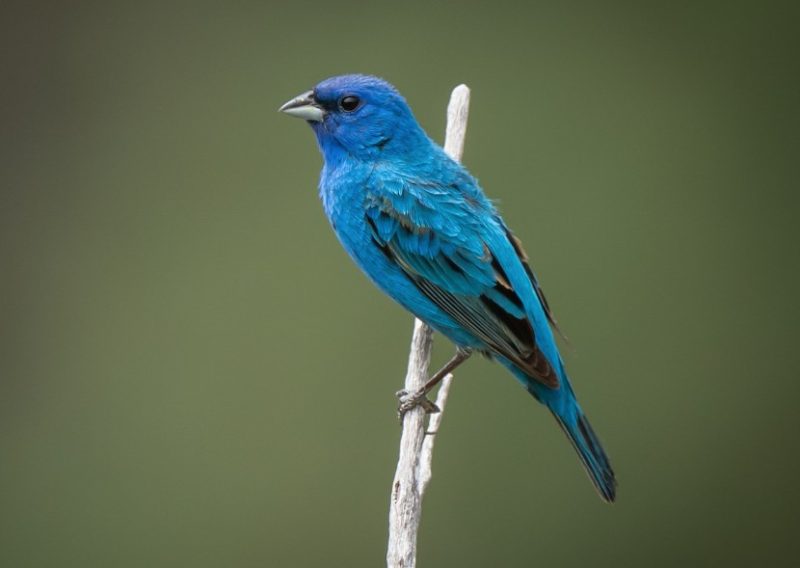
The Indigo Bunting is a dazzling small songbird, with adult males appearing a vivid, deep blue all over during breeding season. In contrast, females and immature birds are warm brown with faint streaks. These buntings measure about 5 to 5.5 inches long and have a short, conical bill ideal for seed eating.
Males sing cheerfully from high perches, delivering rapid, warbling phrases to mark territory and attract mates. Indigo Buntings feed on seeds, berries, and insects, foraging low in shrubs or on the ground. They migrate at night and are guided by the stars—a rare behavior among songbirds.
In Maine, Indigo Buntings are summer residents primarily in open woodlands, weedy fields, and brushy clearings. They nest in shrubs or low vegetation and are more common in the southern half of the state. Though their bright blue plumage stands out, they can be difficult to spot without listening for their song.
Blue-gray Gnatcatcher
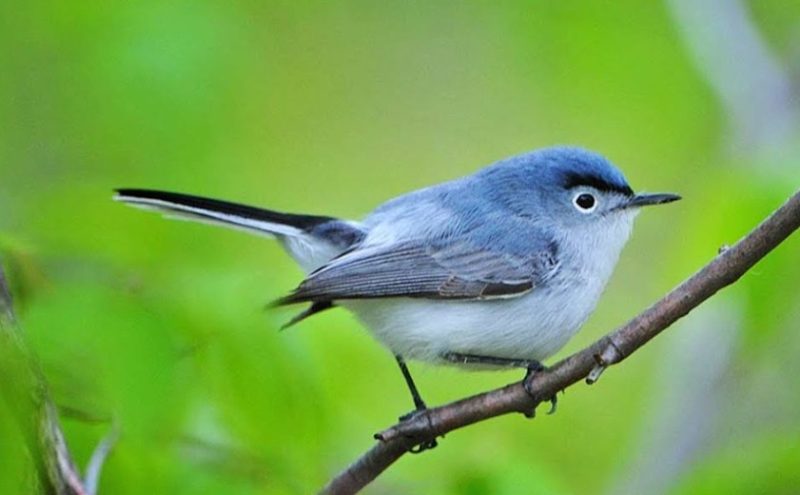
The Blue-gray Gnatcatcher is a tiny, slender songbird with soft blue-gray upperparts, white underparts, and a long black tail with white edges. It has a narrow, pointed bill and a white eye ring that gives it an alert expression. It measures about 4 to 4.5 inches in length and is very active and agile.
This species feeds on tiny insects and spiders, flitting quickly through tree branches, often flicking its tail from side to side. Its call is a high, nasal “spee” or “tsee,” and its movement is constant and fast-paced. It may be seen hovering briefly near leaves or darting quickly from branch to branch.
In Maine, the Blue-gray Gnatcatcher is a local summer resident, mainly in the southern and coastal areas. It prefers deciduous woodlands, forest edges, and areas with dense foliage near water. Though not as common as some other species, its energetic behavior and subtle coloring make it a treat for observant birders.
Pine Warbler
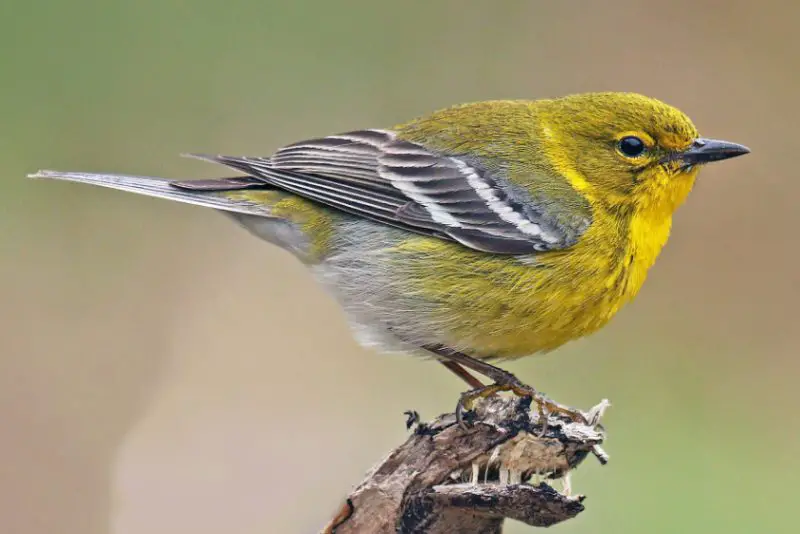
The Pine Warbler is a medium-sized warbler with olive-green to yellowish plumage, white wing bars, and a slightly streaked chest. Males are typically brighter yellow, while females and juveniles appear duller or more grayish. It measures about 5.1 to 5.5 inches in length and has a relatively thick bill for a warbler.
Pine Warblers are among the few warblers that regularly eat seeds, especially pine seeds, in addition to insects. They also visit feeders for suet and sunflower seeds, particularly in early spring or late fall. Their song is a clear, musical trill that can sound similar to a Chipping Sparrow’s but is usually more melodious.
In Maine, Pine Warblers are summer residents mostly in the southern and central regions, inhabiting pine-dominated forests and mixed woodlands. They are often found high in the canopy, making them harder to spot, but their distinctive trill helps identify them. Some individuals may overwinter in Maine during mild winters, especially near feeders.
Brown Creeper

The Brown Creeper is a small, slender songbird with mottled brown and white streaked upperparts that provide excellent camouflage against tree bark. It has a slender, downcurved bill and a long, stiff tail used for support while climbing. Measuring about 5 inches in length, it moves in a distinctive spiral pattern up tree trunks and large branches.
Brown Creepers forage by creeping upward along tree bark, probing crevices with their thin bills to extract insects, spiders, and larvae. They often join mixed-species flocks in winter and may visit suet feeders occasionally. Their high, thin, and somewhat musical call is soft and subtle, making them easy to overlook despite their active presence.
In Maine, Brown Creepers are year-round residents, inhabiting mature deciduous and coniferous forests. They prefer large trees with rough bark and are more commonly found in extensive woodlands and parks. Their cryptic plumage and behavior help them blend seamlessly into their arboreal environment.
Golden-crowned Kinglet

The Golden-crowned Kinglet is a tiny, energetic songbird distinguished by its bright golden-yellow crown bordered with black stripes, visible especially in males. It has olive-gray upperparts, white underparts, and a white eye ring that enhances its expressive face. Measuring only about 3.5 to 4 inches long, it is one of the smallest birds in Maine.
This kinglet feeds primarily on small insects and spiders, gleaning them from needles and leaves of conifers with rapid, agile movements. Its song is a high-pitched, bubbly trill that stands out in northern forests. It often flicks its wings and tail as it forages, giving it a restless, lively appearance.
In Maine, Golden-crowned Kinglets breed in northern boreal forests dominated by spruce and fir. They are common migrants throughout the state and may be seen year-round in suitable coniferous habitats. Their small size and vibrant crown patch make them a favorite among birders familiar with the northern woods.
Red-breasted Nuthatch
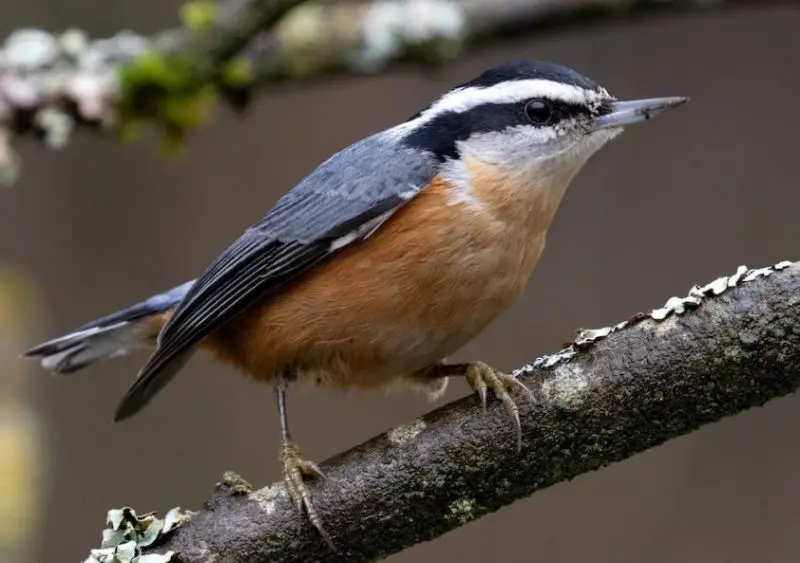
The Red-breasted Nuthatch is a small, stocky bird with a distinctive black eye stripe, bluish-gray upperparts, and a rusty-cinnamon colored breast and underparts. It has a compact body, a short tail, and a straight, pointed bill. The bird measures about 4.5 inches in length and is well known for its unique behavior of climbing down tree trunks headfirst.
This nuthatch feeds mainly on insects and seeds, often storing food in bark crevices for later use. It has a nasal, nasal “yank-yank” call that echoes through the forest, and it often joins mixed-species feeding flocks in winter. Red-breasted Nuthatches are highly adaptable and visit backyard feeders regularly, especially those offering sunflower seeds and suet.
In Maine, Red-breasted Nuthatches are primarily year-round residents in coniferous and mixed forests throughout the state. They prefer mature woodlands with large trees for foraging and nesting in natural cavities or old woodpecker holes. Their acrobatic foraging style and distinctive calls make them a charismatic presence in Maine’s forests.
Frequently Asked Questions About Small Birds in Maine
What are some of the most common small birds found in Maine?
Maine hosts a variety of small birds commonly seen year-round or seasonally, including the Black-capped Chickadee, American Goldfinch, Song Sparrow, Northern Cardinal, and White-breasted Nuthatch. These species are well adapted to Maine’s diverse habitats ranging from dense forests to suburban backyards.
When is the best time to observe small birds in Maine?
The best time to observe small birds in Maine is during spring and summer when many species are breeding and actively singing. Migration periods in spring (April to June) and fall (September to November) also provide excellent opportunities to spot a wide range of small songbirds passing through the state.
Where are the best habitats to find small birds in Maine?
Small birds in Maine can be found in a variety of habitats including mixed and deciduous forests, wetlands, shrublands, suburban gardens, and parks. Many species prefer dense brush or forest edges, while others thrive around feeders in residential areas.
How can I attract small birds to my backyard in Maine?
To attract small birds, provide a variety of native plants that offer natural food sources such as seeds, berries, and insects. Installing bird feeders stocked with sunflower seeds, nyjer, and suet, along with fresh water sources, will also encourage visitation. Providing shelter like shrubs and nesting boxes increases habitat suitability.
Are small birds in Maine affected by seasonal changes?
Yes, many small birds in Maine are migratory and will only be present during breeding or migration seasons. Species like the Dark-eyed Junco and Yellow-rumped Warbler are common winter visitors, while others like the Eastern Phoebe and Indigo Bunting are typically found during warmer months.
What are common feeding habits of small birds in Maine?
Small birds in Maine exhibit diverse feeding habits including insectivory, seed eating, and fruit consumption. Species such as the Ruby-throated Hummingbird feed mainly on nectar, while sparrows and finches prefer seeds. Many warblers catch insects by gleaning from foliage, making insect availability critical for their survival.
How can I identify small birds in Maine?
Identification of small birds in Maine relies on observing physical characteristics such as size, coloration, wing patterns, and distinctive markings. Bird calls and songs are also important clues. Using a field guide or bird identification app can greatly assist beginners in recognizing species.
Do small birds in Maine use birdhouses or nesting boxes?
Many small bird species in Maine, such as Tree Swallows, Eastern Bluebirds, and Chickadees, readily use birdhouses or nesting boxes for breeding. Providing appropriately sized and placed nest boxes can support local bird populations, especially in areas where natural cavities are limited.


